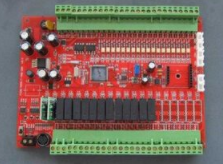About SMT processing machine vision system
The machine vision system is the second factor that significantly affects component assembly. The machine needs to know the exact position of the printed circuit board and determine the relative position of the component and the board to ensure the accuracy of automatic assembly. The imaging is done by using a vision system. The vision system is generally divided into top view, bottom view, head or laser alignment, depending on the location or the type of camera.
(1) The top view camera searches for the target on the circuit board so that the circuit board can be placed in the correct position before assembly.
(2) The head-up camera is used to detect the element at a fixed position, generally using CCD technology. Before assembly, the components must be moved over the camera for visual processing. At first glance, this seems to be a bit time-consuming, but since the placement head must be moved to the feeder to pick up the components, if the camera is set between the pickup position and the installation position, the acquisition and processing of the video can be in the process of moving the placement head In the process at the same time, so as to shorten the placement time.
(3) The head camera is directly installed on the placement head. Generally, linear sensing technology is used to complete the detection of the components during the process of picking up the components to the specified position. This technology is also called "flight centering technology". The mounting efficiency can be greatly improved.

(4) Laser alignment means that a moderate beam is generated from the light source and irradiated on the component to measure the size and shape of the component and the deviation of the central axis of the suction nozzle. However, for components with pins, such as SOIC, QFP and BGA, a third-dimensional camera is required for detection, so the alignment of each component requires a few more seconds. Obviously, this will have a great impact on the speed of the entire placement machine system.
Among the three element alignment methods, CCD technology is the best. The current CCD hardware performance has reached a considerable level, "backlight" and "reflected light" technology, as well as the development of programmable lighting control technology, can better cope with the needs of a variety of different component placement.
SMT assembly processing
2. Feeding
The boom type machine can support many different types of feeders, such as ribbon, disc, bulk, tube, etc. This is in sharp contrast to the high-speed installation system, which can only use bulk or ribbon feeders. When installing mainframes (IC, such as QFP and BGA), boom machines are the only option.
3. Flexibility
Flexibility is a key factor to consider when choosing SMT placement equipment. Due to the increasingly fierce competition of electronic products and the increasing uncertainties in production, it is necessary to frequently adjust the output of products or arrange product transformation. Therefore, corresponding requirements are put forward for the placement machine, that is, the system is required to have good flexibility. To adapt to the current ever-changing manufacturing environment, this is what we often call the flexible manufacturing system. For example, for certain brands of placement machines, when the functions from dispensing to placement are exchanged, only the dispensing components and the placement components need to be exchanged. This equipment is suitable for multi-tasking, multi-purpose, and short-term production cycles. Processing enterprises.
In short, the following key issues must be considered when selecting equipment: machine type, imaging, feeding and flexibility. With these understandings, you can identify the pros and cons of different equipment and make wise choices. At the same time, when choosing equipment, you should be based on actual needs, and you must not blindly seek big things to avoid unnecessary waste.